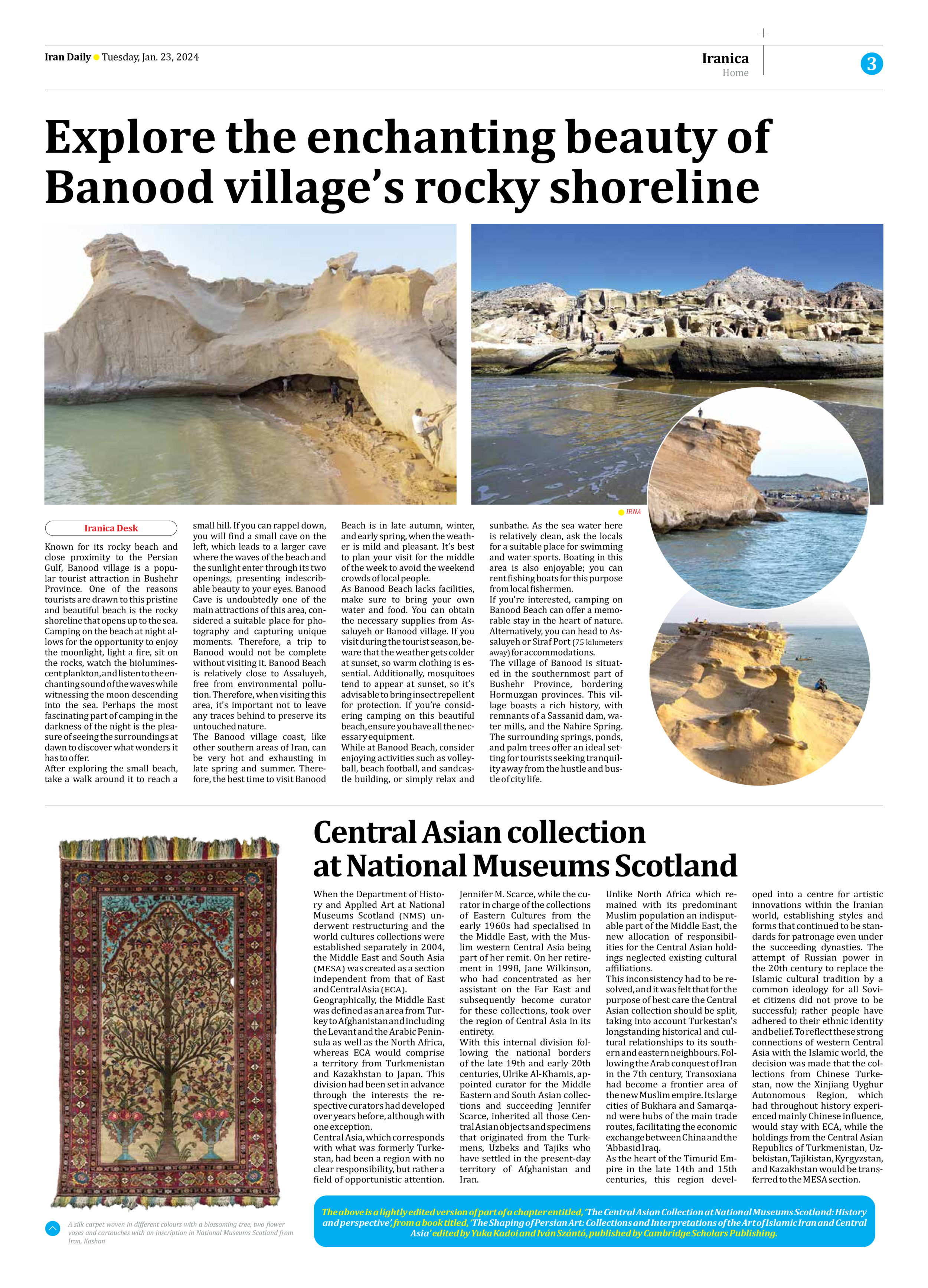
Central Asian collection at National Museums Scotland
When the Department of History and Applied Art at National Museums Scotland (NMS) underwent restructuring and the world cultures collections were established separately in 2004, the Middle East and South Asia (MESA) was created as a section independent from that of East and Central Asia (ECA).
Geographically, the Middle East was defined as an area from Turkey to Afghanistan and including the Levant and the Arabic Peninsula as well as the North Africa, whereas ECA would comprise a territory from Turkmenistan and Kazakhstan to Japan. This division had been set in advance through the interests the respective curators had developed over years before, although with one exception.
Central Asia, which corresponds with what was formerly Turkestan, had been a region with no clear responsibility, but rather a field of opportunistic attention. Jennifer M. Scarce, while the curator in charge of the collections of Eastern Cultures from the early 1960s had specialised in the Middle East, with the Muslim western Central Asia being part of her remit. On her retirement in 1998, Jane Wilkinson, who had concentrated as her assistant on the Far East and subsequently become curator for these collections, took over the region of Central Asia in its entirety.
With this internal division following the national borders of the late 19th and early 20th centuries, Ulrike Al-Khamis, appointed curator for the Middle Eastern and South Asian collections and succeeding Jennifer Scarce, inherited all those Central Asian objects and specimens that originated from the Turkmens, Uzbeks and Tajiks who have settled in the present-day territory of Afghanistan and Iran.
Unlike North Africa which remained with its predominant Muslim population an indisputable part of the Middle East, the new allocation of responsibilities for the Central Asian holdings neglected existing cultural affiliations.
This inconsistency had to be resolved, and it was felt that for the purpose of best care the Central Asian collection should be split, taking into account Turkestan’s longstanding historical and cultural relationships to its southern and eastern neighbours. Following the Arab conquest of Iran in the 7th century, Transoxiana had become a frontier area of the new Muslim empire. Its large cities of Bukhara and Samarqand were hubs of the main trade routes, facilitating the economic exchange between China and the ‘Abbasid Iraq.
As the heart of the Timurid Empire in the late 14th and 15th centuries, this region developed into a centre for artistic innovations within the Iranian world, establishing styles and forms that continued to be standards for patronage even under the succeeding dynasties. The attempt of Russian power in the 20th century to replace the Islamic cultural tradition by a common ideology for all Soviet citizens did not prove to be successful; rather people have adhered to their ethnic identity and belief. To reflect these strong connections of western Central Asia with the Islamic world, the decision was made that the collections from Chinese Turkestan, now the Xinjiang Uyghur Autonomous Region, which had throughout history experienced mainly Chinese influence, would stay with ECA, while the holdings from the Central Asian Republics of Turkmenistan, Uzbekistan, Tajikistan, Kyrgyzstan, and Kazakhstan would be transferred to the MESA section.
The above is a lightly edited version of part of a chapter entitled, ‘The Central Asian Collection at National Museums Scotland: History and perspective’, from a book titled, ‘The Shaping of Persian Art: Collections and Interpretations of the Art of Islamic Iran and Central Asia’ edited by Yuka Kadoi and Iván Szántó, published by Cambridge Scholars Publishing.







